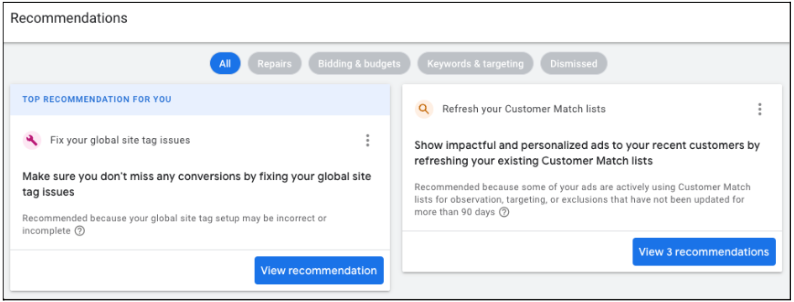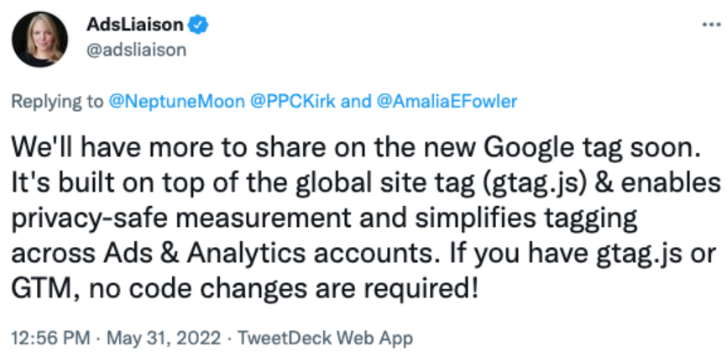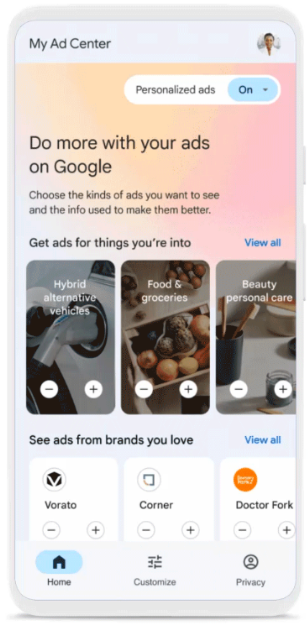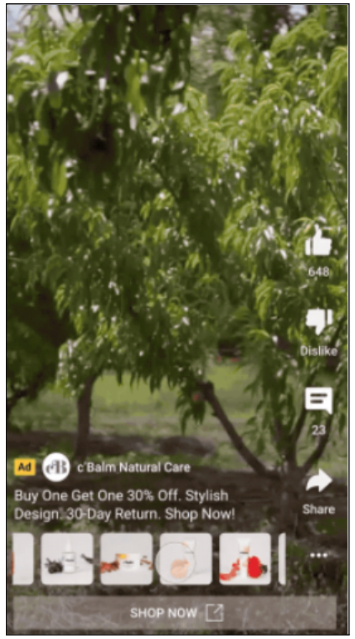Google’s annual marketing event to announce the latest innovations and updates, Google Marketing Live, occurred last month. This event gives advertisers and consumers a view into Google’s priorities. The main themes focused on:
Google announced over twenty updates ranging from major to minor impacts. The majority of the updates will roll out over the remainder of 2022. Let’s review the core themes and what they mean for advertisers.
Over the last half-decade, Google has made significant improvements to its automation. This trend will continue. As stated at the event, “AI-driven advertising is our future.” Bid strategies are more innovative as they account for 100s of user signals not available through manual bidding. With the right advertiser inputs, automated bid strategies are trustworthy and often produce better results than manual strategies. Responsive Search Ads (RSAs) are another feature that has helped with ad testing. Advertisers submit up to 15 headlines and four description lines to which Google optimizes for the best combinations.
Performance Max campaigns are Google’s latest feature to make heavy use of automation. This campaign type combines bid automation, ad testing, inventory and user signals to drive performance. Though Performance Max has been around for a couple of years, the enhancements continue to roll out.
One of the concerns with Performance Max campaigns is that they aren’t transparent. For example, you can’t see conversion data for your assets and combinations or what search queries are converting. Advertisers submit all of their various assets, including images, text and audience signals, for which Google will optimize. Unfortunately, there isn’t much performance clarity with these updates. Though the Performance Max updates don’t help with transparency, they provide added tools and support.

Going back to RSAs, the next update is automatically created assets for responsive search ads. Similar to dynamic search ads (DSAs), Google takes content from your landing page, domain, and ads to create customized assets. Google states that this may improve ad relevance and performance. With this feature turned on, RSAs utilize a mix of advertiser and automatically created assets to drive performance.
This update isn’t surprising in lieu of ad extension changes announced in February. Automated extensions can now show along with manual extensions. For example, two automated sitelinks and two manual sitelinks can show at the same time. Advertiser and customized assets run together, with Google using machine learning to find the best combinations.
An interesting announcement is lift testing. This experiment has been available as a brand lift test on YouTube. This iteration can be run as Search and Conversion lift tests. Search lift tests measure how impactful YouTube campaigns are for driving organic searches. In other words, does the presence of video advertising improve traffic from organic searches? Conversion lift tests determine incremental conversions based on users and geography. For example, you could test showing ads in the northeast but not the northwest.
Privacy has been a central issue for many platforms over the last couple of years, including Google. The engine has been moving away from third-party data in favor of advertisers uploading their own data for features such as Customer Match and retargeting.
Enhanced conversions is another feature that has gained traction in 2022. By making changes to the conversion tag through the global site tag, Google Tag Manager, or the API, customers can send hashed first-party conversion data, such as email addresses, back to Google. The process is secure while helping advertisers improve the accuracy of their conversions. As an example, lead gen advertisers can track actions off the website and send them back to Google.
Another new tag is in the works called the Google tag. This tag will build upon the existing global site tag with many improvements. Ginny Marvin, the Google Ads product liaison shared this tweet about the new tag.

Google will also give users more control over the ads they see. The new program, My Ad Center, allows users to choose the types of ads they want to see and how their data is used. Here is the shared image from the event.

*Image from support.google.com
Though many of the Shopping updates aren’t unique to Google Ads, advertisers will benefit from the enhanced shopping experience. Users will be able to search by photo, view products in their homes through augmented reality and checkout directly from Google. The overarching theme is that product specifications should always be kept up to date, and images should showcase the product up close.
With this theme in mind, a revamped products tab is coming to Google Ads. This tab will now be easier to access because it will be at the account level instead of the campaign level. This update may seem minor, but it will help advertisers view product data at a holistic level. Advertisers will be able to see:
Other Shopping updates tie in with Performance Max campaigns. Between the inventory and features that Performance Max provides, the updates are being rolled out here. It’s not a surprise since Smart Shopping and Local campaigns are becoming Performance Max campaigns later this year. The most substantial update is highly visual Shopping ads. Various Shopping ad formats will show throughout the SERPs, even where organic listings traditionally are.
This update is another in the long line of Google emphasizing Shopping results. Over the years, Shopping ad units have become larger and more prevalent with paid listings. Sometimes, you may only see one or two listings below Shopping ads if they are on the top of the page. A couple of years ago, Google brought back free listings within the Shopping tab to entice more businesses to submit product feeds. This update continues integrating Google Shopping results into areas where more users will see them.
Other updates include burst campaigns in Performance Max and attracting new loyalty members. The burst campaigns run for two weeks or less during seasonal events and optimize for in-store goals. This feature could be useful during the holiday season. Advertisers will soon have the ability to garner new loyalty members through Performance Max campaigns. Loyalty lists can be uploaded through Customer Match and then advertised to potential new loyalty members. The important item is that these loyalty members are new. We won’t be using funds to re-engage existing members.
The next Shopping update ties in with Video campaigns. Shopping inventory is expanding to YouTube Shorts and YouTube Search through product feeds. YouTube Shorts are videos 60 seconds in length or less and compare to TikTok or Snapchat videos. Advertisers can target these Shorts through Video action campaigns. You can see in the image that the products are scrollable, and users can click to shop now.

As Shopping inventory is expanding, so is video. Discovery campaigns show ads on Google’s feeds. Video assets are not yet available to show, but they will soon. Advertisers will also be able to create video ads through YouTube templates. Even though Google has been pushing video for many years, it hasn’t always had all-encompassing tools to create attention-grabbing videos. We’ll see how effectively these templates can aid advertisers.
The other big announcement is Display and Video 360 (DV360), allowing for more connected TV (CTV) inventory. Advertisers can use Google audiences to reach more users across YouTube and CTV apps, such as Hulu and Peacock.
It’s always worthwhile to hear directly from Google and get a peek behind the curtain. Many of these updates are welcome additions with varying ranges of impact. It would be prudent to see more updates that better assist account managers on a daily basis. For example, automatically created assets in RSAs is nice, but we don’t know if we’ll be able to see the individual conversion data for each combination. Hopefully, we’ll see more transparency as these features mature. In the meantime, advertisers should:
The Google Ads landscape will continue to evolve. We need to as well.
Running campaigns without Offline Conversion Tracking is like fishing blind—uncertain and inefficient. Learn how OCT connects CRM data to ad platforms, helping CMOs optimize for real business impact, from quality leads to closed deals.

The B2B landscape is relentless, and mediocre video production won’t cut it. Learn why scaling high-quality video production is essential to drive ROI, stand out, and stay competitive in today’s paid media game.

Misaligned metrics and fragmented strategies aren’t just inconvenient—they’re costing your marketing team revenue and results. Explore the root causes of data chaos and learn how to align your metrics for paid media success.